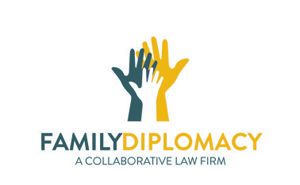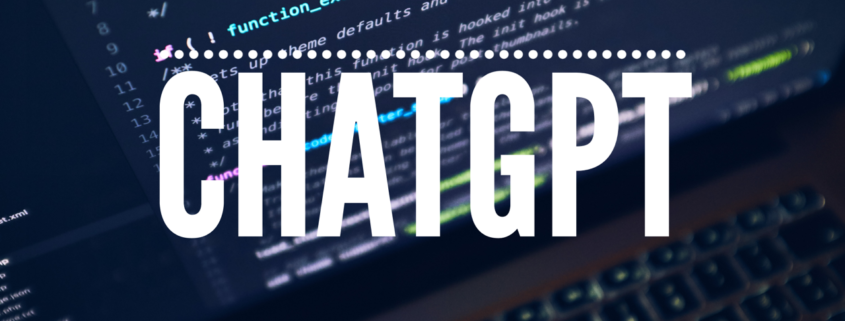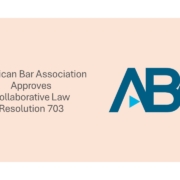Does ChatGPT Get Collaborative Divorce Right?
We have been hearing a lot about ChatGPT over the last few months. For those unaware, ChatGPT is a form of artificial intelligence that uses plain language to produce an answer to a prompt. According to a ChatGPT FAQ page, “These models were trained on vast amounts of data from the internet written by humans, including conversations, so the responses it provides may sound human-like. It is important to keep in mind that this is a direct result of the system’s design (i.e. maximizing the similarity between outputs and the dataset the models were trained on) and that such outputs may be inaccurate, untruthful, and otherwise misleading at times.”
So, does AI get Collaborative Divorce correct?
The Prompt
The way that the program works is that, in plain language, you ask a question or make a request, and it produces a response. For these purposes, I entered the following prompt: “Explain Collaborative Divorce in a blog post.” The first response provided 6 paragraphs of text. To simplify things, I refined my query, and I asked it to respond in 3 paragraphs.
Below is the result.
ChatGPT’s Explanation of Collaborative Divorce
Collaborative divorce is an alternative to traditional divorce proceedings that involves both parties working together, along with their respective attorneys, to reach a settlement that works for everyone. This process is designed to be a more cooperative and amicable way of ending a marriage, allowing both parties to have more control over the outcome of the divorce. Collaborative divorce can be a more cost-effective and efficient process than traditional divorce proceedings, as it often involves less need for expensive and time-consuming litigation.
During the collaborative divorce process, both parties and their attorneys have a series of meetings to discuss and negotiate the terms of the divorce. These meetings may involve other professionals, such as financial planners or mental health professionals, who can help facilitate the process and ensure that everyone’s needs and interests are being addressed. One of the key benefits of collaborative divorce is that it can be completed more quickly than a traditional divorce, which can be a major advantage for those who are looking to move on with their lives as soon as possible.
Collaborative divorce requires a willingness to work together and a commitment to open and honest communication. It is not right for everyone, but for those who are looking for an alternative to traditional divorce proceedings, collaborative divorce can be an excellent option to consider. With its focus on cooperation, communication, and mutual respect, collaborative divorce can help couples to move on from their marriage with greater ease and less stress, paving the way for a more positive future for both parties.
So Does ChatGPT Get Collaborative Divorce Right?
The explanation actually impressed me; it got right a lot of aspects of the Collaborative Divorce process. Collaborative Divorce is a non-adversarial alternative to traditional divorce. It involves spouses working together with their separate lawyers through a series meetings, oftentimes with the help of a Facilitator (who is an expert at communication, family dynamics, and childhood develop, and is a licensed mental health professional). Further, there is usually also a Neutral Financial Professional involved, who streamlines the information gathering process, helps ensure each client has the tools they need to make an informed decision, and guides financial discussions to try to meet the future goals of each client.
One detail ChatGPT missed about the Neutral Financial Professional is that, at least in Florida, the professional is oftentimes a Certified Public Accountant (though sometimes it might be a Financial Planner, as the explanation above states).
The big thing that ChatGPT does not discuss is the Disqualification Clause. This is what makes Collaborative Divorce different than all other forms of dispute resolution (in case you were wondering, the first, longer explanation created by the program also does not discuss the Disqualification Clause). Essentially, the Disqualification Clause means that the lawyers and other professionals are there solely for the purpose of reaching an out of court agreement, and they cannot be used to fight in court.
The explanation above says that Collaborative Divorce “often involves less need for expensive and time-consuming litigation.” This is incorrect. There is not “less need” for litigation; there is no need for litigation when the spouses reach a resolution. According to research by the International Academy, 86% of Collaborative matters end in a full resolution. An additional 2% end in reconciliation between the spouses. My personal experience is that 90+% of Collaborative matters end in a full resolution.
The Disqualification Clause means that professionals waste no time, money, or energy on fighting (or preparing to fight) in court. In the event that the spouses cannot reach a resolution, or one of the spouses decides that they no longer want to engage in the process, the Collaborative matter terminates, and the spouses can then move on to litigation. Again, this is relatively rare.
Otherwise, ChatGPT does a pretty good job of representing Collaborative Divorce accurately.
Conclusion
ChatGPT is a pretty amazing technology that has a bright future. However, it is currently missing an important aspect of Collaborative Divorce. The Disqualification Clause is what makes Collaborative Practice different than all other forms of dispute resolution. If you want to learn more, make sure to contact a (human) Collaborative Professional.
Adam B. Cordover is co-author of an America Bar Association book on “Building a Successful Collaborative Family Law Practice.” He is a member of the Board of the International Academy of Collaborative Professionals. Adam is also one of the most experienced Collaborative Lawyers in Tampa Bay and Greater Sarasota. He is currently accepting matters from throughout the State of Florida.






